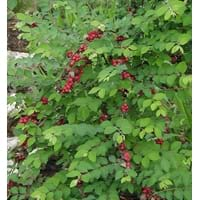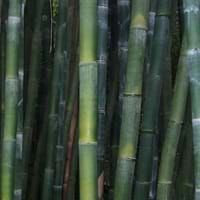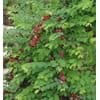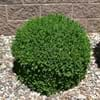Life Span
Annual and Perennial
Perennial
Type
Broadleaf Evergreen
Grass
Types
Not Available
Greenstripe Vivax, Moso, Weavers Bamboo, Oldhamii
Number of Varieties
Not Available
Habitat
All sorts of environments
Subtropical climates, Wet Woods
USDA Hardiness Zone
8-15
8-11
AHS Heat Zone
10 - 1
12 - 8
Sunset Zone
Not Available
H1, H2, 8, 9, 14, 15, 16, 17, 18, 19, 20, 21, 22, 23, 24
Habit
Upright/Erect
Upright/Erect
Flower Color
White, Pink
Not Available
Flower Color Modifier
Bicolor
Bicolor
Fruit Color
Red
Not Available
Leaf Color in Spring
Dark Green
Dark Green
Leaf Color in Summer
Dark Green
Light Green
Leaf Color in Fall
Dark Green
Dark Green
Leaf Color in Winter
Dark Green
Dark Green
Leaf Shape
Pinnate
Acicular
Plant Season
Spring, Summer, Fall, Winter
Spring, Summer, Fall, Winter
Sunlight
Partial shade, Full Shade
Full Sun, Partial Sun
Type of Soil
Loam
Clay, Loam, Sand
The pH of Soil
Acidic
Acidic, Neutral, Alkaline
Soil Drainage
Well drained
Average
Bloom Time
Late Spring, Early Summer
Not Available
Tolerances
Drought
Drought
Where to Plant?
Container, Ground
Container, Ground
How to Plant?
Grafting, Hardwood Cuttings, Root Plants, vegetative cuttings
Grafting, Seedlings, Stem Planting, Transplanting
Plant Maintenance
Medium
Medium
Watering Requirements
Average Water Needs
Needs watering once a week, Use Mulches to help prevent water loss during hot and windy weather, Water Deeply
In Summer
Average Water
Lots of watering
In Spring
Adequately
Moderate
In Winter
Average Water
Average Water
Soil pH
Acidic
Acidic, Neutral, Alkaline
Soil Type
Loam
Clay, Loam, Sand
Soil Drainage Capacity
Well drained
Average
Sun Exposure
Partial shade, Full Shade
Full Sun, Partial Sun
Pruning
A hard prune may be necessary if the plant becomes woody, Prune for size control
Do not prune during shooting season, Prune in late summer or fall, Remove damaged leaves
Fertilizers
All-Purpose Liquid Fertilizer
All-Purpose Liquid Fertilizer
Pests and Diseases
Aphids, Bacterial Gall, Fungal Diseases
Black sooty mold, Mealybugs, Mosaic viruses, Powdery mildew, pythogens, Stem rot
Plant Tolerance
Drought
Drought
Flowers
Insignificant
None
Flower Petal Number
Single
Single
Foliage Texture
Medium
Coarse
Foliage Sheen
Glossy
Matte
Attracts
Birds
Deers, Rabbits, Rats, Squirrels
Allergy
Not Available
allergic conjunctivitis, Asthma, Inflammation, Throat itching
Aesthetic Uses
Showy Purposes
Showy Purposes
Beauty Benefits
No Beauty Benefits
Not Available
Environmental Uses
Air purification
Agroforestry, Air purification, No fertilizer, pesticides, or herbicides needed
Medicinal Uses
Eye Problems, Sore Eyes
Clears heat, Cold, fidgeting, Treating fever, Urinary tract problems
Part of Plant Used
Fruits
Leaves, Stem
Other Uses
Used As Food
Application in Handicrafts, Showy Purposes, Used As Food, Used in Furniture, Used in paper industry
Used As Indoor Plant
No
No
Used As Outdoor Plant
Yes
Yes
Garden Design
Container, Foundation, Groundcover, Houseplant, Mixed Border, Rock Garden, Wall, Topiary, Bonsai, Espalier, Tropical
Feature Plant, Screening / Wind Break, Tropical
Botanical Name
ARDISIA crenata
BAMBUSA oldhamii
Common Name
Coralberry
Clumping Bamboo, Giant Timber Bamboo, Oldham's Bamboo
In Hindi
Coralberry
Bānsa
In German
Coralberry
Bambus
In French
Coralberry
Bambou
In Spanish
Coralberry
Bambú
In Greek
Coralberry
μπαμπού
In Portuguese
Coralberry
bambu
In Polish
Coralberry
Bambus
In Latin
Coralberry
Bamboo
Phylum
Magnoliophyta
Magnoliophyta
Class
Liliopsida
Liliopsida
Family
Myrsinaceae
Poaceae
Clade
Angiosperms, Asterids, Eudicots
Not Available
Tribe
Not Available
Bambuseae
Subfamily
Not Available
Not Available
Number of Species
Not Available
Not Available
Importance of Coralberry and Giant Timber Bamboo
Want to have the most appropriate plant for your garden? You might want to know the importance of Coralberry and Giant Timber Bamboo. Basically, these two plants vary in many aspects. Compare Coralberry and Giant Timber Bamboo as they differ in many characteristics such as their life, care, benefits, facts, etc. Every gardener must at least have the slightest clue about the plants he wants to plant in his garden. Compare their benefits, which differ in many ways like facts and uses. The medicinal use of Coralberry is Eye Problems and Sore Eyes whereas of Giant Timber Bamboo is Clears heat, Cold, fidgeting, Treating fever and Urinary tract problems. Coralberry has beauty benefits as follows: No Beauty Benefits while Giant Timber Bamboo has beauty benefits as follows: No Beauty Benefits.
Compare Facts of Coralberry vs Giant Timber Bamboo
How to choose the best garden plant for your garden depending upon its facts? Here garden plant comparison will help you to solve this query. Compare the facts of Coralberry vs Giant Timber Bamboo and know which one to choose. As garden plants have benefits and other uses, allergy is also a major drawback of plants for some people. Allergic reactions of Coralberry are Not Available whereas of Giant Timber Bamboo have allergic conjunctivitis, Asthma, Inflammation and Throat itching respectively. Having a fruit bearing plant in your garden can be a plus point of your garden. Coralberry has showy fruits and Giant Timber Bamboo has no showy fruits. Also Coralberry is not flowering and Giant Timber Bamboo is not flowering . You can compare Coralberry and Giant Timber Bamboo facts and facts of other plants too.




